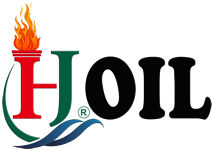Definition Of Styrene Butadiene Rubber (SBR)
Styrene butadiene rubber (SBR) is the outcome of synthetic rubber research that took place in the United States and Europe under the impact of the shortage of natural rubber during World Wars I and II. In 1929, a German chemist developed a series of synthetic elastomers by copolymerization of two compounds (styrene and butadiene) in the presence of a catalyst. The first step involved in the process is to let styrene and butadiene react together. The new synthetic rubber that was formed consists of about 25% styrene, with butadiene making up the rest, which in principle had the same properties as natural rubber. These rubber is considered to be the highest volume general purpose and the most common type of synthetic rubber.
Applications Of Styrene Butadiene Rubber (SBR)
- Used in many of the same products as natural rubber
- Used to cover different types of hose and in a number of other products
- Used in tyre and tyre products which also includes tread rubber and this accounts for 76% of global consumption
- Used in mechanical goods
- Used in automotive
- Used in miscellaneous
- Used in including adhesives
- Used in floor tile and shoe soles etc
- Used in Adhesives and chewing gum
CHARACTERISTICS Of Styrene Butadiene Rubber (SBR)
- This type of rubber is usually very weak unless reinforcing fillers are incorporated. With suitable fillers, this becomes a strong rubber
- It has similar chemical and physical properties like natural rubber
- It has better abrasion resistance
- It has poorer fatigue resistance
- Heat resistance is better than natural rubber
- Low temperature flexibility and tensile strength are less than that of natural rubber
|
Molar mass Mn, g/mol |
200000 |
|
Molar mass Mw, g/mol |
420000 |
|
Mw / Mn |
2.1 |
|
Styrene content, % |
18 |
|
Cis-1,4-content, % |
35 |
|
Trans-1,4-content, % |
54 |
|
1,2-content, % |
11 |
|
Glass transition temperature Tg, °C |
- 69.7 |








